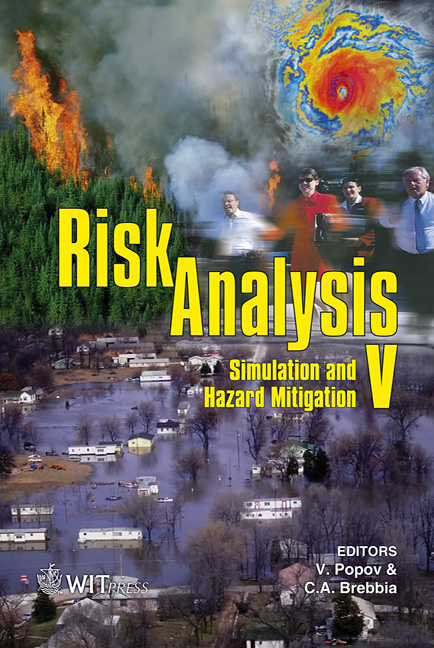Risk Analysis In The Chemical Industry: An Urea-formaldehyde Resins Case
Price
Free (open access)
Transaction
Volume
91
Pages
9
Published
2006
Size
590 kb
Paper DOI
10.2495/RISK060041
Copyright
WIT Press
Author(s)
A. Quintana, L. López-Doval, R. Rodríguez, J. A. Souto & J. J. Casares
Abstract
The fast evolution of the industry technology as a whole and, particularly, of that associated to the chemical processes, its rapid growth and the resulting increase in chemical products inventories in industrial plants and transport, has increased the probability of severe accidents, and the magnitude of their consequences. The purpose of this study is to verify the application of a regulation based on deterministic methods to guarantee the safety of the environment and inhabited areas around an industrial facility. The study is focused on a chemical plant for resins production, where hazardous chemical substances are processed and stored, such as methanol, formaldehyde, vinyl acetate monomer (VAM) and phenol. The HAZOP deterministic methodology is used to analyse potential accidents and, afterwards, to determine the magnitude of their consequences. In this study, accidents that would create a toxic cloud and its following dispersion into the atmosphere are considered. Therefore, a regulatory atmospheric dispersion model has been applied. Depending on the type of accident, the chemical substances involved and the atmospheric conditions of the area, the software calculates how surrounding areas are affected. Likewise, the concentration of toxic substances at a certain distance can be determined in order to evaluate the percentage of population affected by the dispersion of the toxic cloud. Keywords: hazardous chemical, consequence analysis, risk analysis, hazard analysis, chemical accident.
Keywords
hazardous chemical, consequence analysis, risk analysis, hazard analysis, chemical accident.





